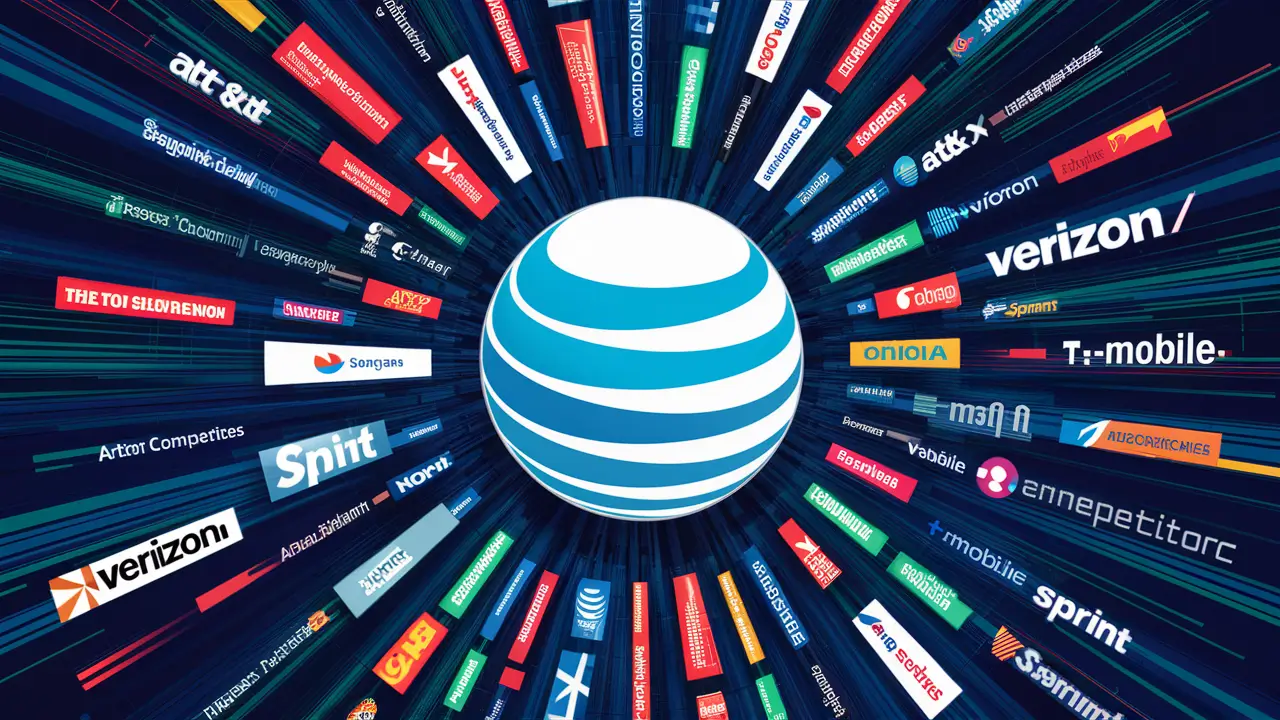Who does AT&T compete with?

AT&T operates in a sector that is filled with only several other large telecommunications businesses. Its three major rivals include Verizon, T-Mobile, and CenturyLink.
Verizon
Verizon is considered to be one of the main competitors of AT&T Internet particularly in the mobile phone/wireless segment. Verizon and AT&T are two telecommunication giants in America, offering plans for phones and having extensive coverage across the country, and a sizable number of stores selling wireless services. Some key points of their competition.
- Network coverage: Verizon and AT&T are the two who have the largest 4G LTE networks in the United States with their coverage extending to more than 70% of the country which assist them in their fight for market share.
- Cell phone plans: Both of them provide different cell phone plans, which include prepaid plans and unlimited plans. They fight cutthroat battles on pricing and the features of the plans to attract new users and keep the old ones.
- Premium phones: Both carriers fight to have the newest premium smartphones in their networks such as iPhone and Samsung Galaxy. They employ exclusive phone deals as a strategic weapon.
- Retail stores: Both companies have more than 2,000 of their retail outlets throughout the country. This has proven to be a strategic factor in gaining new clients in the wireless telecommunication industry.
- Business/enterprise services: The two have especially been engaged in a war to penetrate the market of consumer wireless and the business wireless market where AT&T and Verizon are the biggest competitors. These services generate a great deal of revenue.
T-Mobile
T-Mobile has emerged as a stronger mobile contender in recent times. AT&T sometimes offers their cell phone plans at cheaper prices and this is when they are likely to vie with T-Mobile. Key areas of competition:
- Cell phone plan rates: In the last few years, T-Mobile has been charging forward with deep discounts and targeted customer offers. The fact that they have set very competitive prices has had the effect of directly competing with AT&T.
- 5G network: They are currently locked in a fierce battle to roll out 5G networks across the country and offer higher data speeds to as many markets as possible. 5G networks have emerged as a new focal area.
- Un-carrier movement: This has put pressure on AT&T to come up with more liberal services such as the ones that T-Mobile has marketed its campaigns around eliminating. These initiatives were frequently based on the theme of lower monthly payments.
CenturyLink
As telecom companies, CenturyLink and AT&T have significant competition in both consumer and business markets for home services.
- Home Internet: AT&T and CenturyLink provide cable TV and broadband services to residential customers in many of the same geographic areas. Home broadband internet service is considered to be one of the key services.
- Home landline service: Even as the market for landline services shrinks, it is still a market in which CenturyLink and AT&T directly compete to secure consumers. Telephone line services, broadband, and cable television services retain competition in bundled services.
- Managed business solutions: The two are big players involved in the provision and sale of sophisticated network, cloud, and communication solutions for businesses of all scales. Enterprise services drive profits.
Beyond those three companies, AT&T faces additional competition in certain markets and products
- Cable providers: Competition to AT&T home TV and Internet delivery includes Comcast, Spectrum, and Cox among other cable television service providers. These companies have also ensured that they establish high-speed cable networks.
- Satellite companies: Other competitors include DISH Network since the two offer similar service products targeting the same customers as those offered by AT&T. This is because the content offerings and price remain the main competition that is being offered in the market.
- Regional telecoms: Numerous regional telecommunications companies challenge AT&T in various local markets across the United States for internet, television, and business services. Frontier, Windstream, and Cincinnati Bell are some of the companies aiming at local customers.
Currently, the US telecom market is still characterized by intense competition and rivalry not only among the leading players but between them as well; even the giants like AT&T. The key competitors have different areas of strength and services that are served in different regions hence the need for constant consumer/consumer product innovation from AT&T. Pursuing high-quality networks while keeping subscriber expenses also remains an important strategic threat for AT&T vs rivals with similar focus on the same customer base.
Upgrade to faster, more reliable AT&T Fiber Internet today! Call us at +1 844-905-5002 and get connected with speeds that keep you ahead.